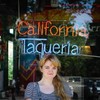A new study from RMIT and Monash University reveals that one in five (23 percent) of Australians have fallen victim to "image-based abuse," otherwise known as revenge porn. Researchers found that the practice of taking sexual or nude images without consent and distributing or threatening to distribute was more widespread than previously thought.The research, which surveyed more than 4,200 people aged between 16 and 49, defined revenge porn in terms of non-consensually taken or distributed photos or videos where a person was nude, showing breasts or genitals, and engaged in a sex act, showering, or bathing. The definition also included upskirt shots. The most commonly reported category was sexual or nude shots taken without consent, and that one-in-five statistic is conservative—as people don't always know that their images have been distributed in the first place.Revenge porn is not to be confused with consensual sharing of nudes. As the survey findings note, this is a "relatively common" experience, with almost half of respondents saying they'd sent nudes of themselves to someone else at least once—young men in their 20s were the most likely to do so. While abuse risk is higher for those who consensually share sexual selfies, they are not the only victims of revenge porn. Many of the respondents had experienced someone taking a sexual or nude photo of them without permission.Around 11 percent of those surveyed reported having their images sent to others without their consent, mostly via mobile phone, email, Snapchat, Facebook, and blog sites like Tumblr. Very few reported that their images had been shared on revenge pornography websites—social media and text messages were a more common means of sharing.Around nine percent of people have been threatened that a sexual or nude image would be sent to others. It was found that this experience was particularly harmful to victims on a psychological level. Overall, 80 percent of revenge porn victims reported "high levels" of psychological distress, "consistent with a diagnosis of moderate to severe depression and/or anxiety disorder." They were almost twice as likely as non-victims to report these levels of distress.One of the most disturbing findings from the survey is that one in two Australians with a disability report being a victim of image-based abuse. 53 percent of participants with a disability reported someone taking a nude or sexual image of them without their permission, and 42 percent said this image has been distributed. This abuse was likely to have been perpetrated by friends and family members. Victimisation was also much higher among Indigenous Australians, who around twice as likely to be victimised as non-Indigenous Australians.While men and women are equally likely to report being victims of revenge porn practices, perpetrators of image-based abuse are most likely to be male—54 percent of victims reported that their perpetrators was male, 33 percent that their perpetrators were female, and 13 percent an unknown or mixed group of both male and female perpetrators. Women were much more likely than men to be victimised by a partner or former partner, and women victims were much more likely than men to fear for their safety as a result of revenge porn.The results indicate that revenge porn practices have grown more popular over time. A 2014 survey found that only around 10 percent of Australians reported to have been a victim. As the report explains, "Since investigating the issue of sexual violence and digital technologies since 2009, we have witnessed alarming shifts in the ways in which images are being used by a diverse range of perpetrators for multiple reasons."While both NSW and WA have strict revenge porn laws, the lack of national consistency means that most victims who wish to take legal action against their perpetrators must do so in civil rather than criminal courts. The researchers recommend a national overhaul in light of their findings, saying that "the harms associated with image-based abuse warrant it being specifically classified as a federal telecommunications criminal offence."Follow Kat on Twitter
Advertisement
